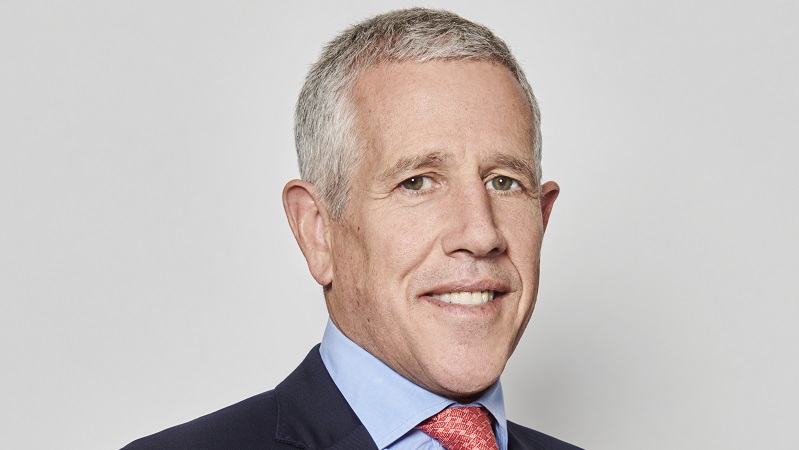Fixed income assets came into vogue in recent years as historically high interest rates sent bond yields soaring.
But with most central banks now entering the early stages of their rate cutting cycle, how can investors maintain their income from fixed income?
Here, five spokespeople give their views on whether opportunities still remain for investors in a low-rate world.
Kaspar Hense, senior portfolio manager on the RBC BlueBay Fixed Income team
With central banks globally embarking on a cutting cycle, we are entering a ‘golden era’ for fixed income. Despite long-end yields reaching 5% at the end of 2023, volatility has diminished the risk-return profile in 2024.
Moving forward, we see a sideways trending market providing strong opportunities to lock in long end yields up to 4.5%.
Yields have rallied too far and are pricing in a rather imminent hard landing like 2008, which is certainly not our base case. Front-loading rate cuts to ‘neutral’ will be challenging. While financial assets may react positively to cuts, the real economy will initially be negatively impacted by higher prices, further weakening affordability.
See also: As Australia phases out AT1s, what does the future hold for the wider market?
Despite having a positive structural view, we are cautious in the short term. There may be clouds on the horizon, given that monetary policy has a lag which may be longer than in the past due to longer maturity of debt.
That means that high cash rates will continue to bite and interest cost of debt will still rise. To this end, we appear to be in an end-cycle, which may require significant investments to avoid a harsh slowdown at the end of 2025.
Dave Breazzano, head of credit at Polen Capital
Even in the face of the Fed’s first rate cut in over four years, yields remain elevated. The Fed’s recent decision reflects a general belief that inflation is controlled, and the US economy may be softening. However, a return to zero-interest policy seems unlikely and most forecasts see the Fed Funds rate settling around 3% over the next couple of years.
Recent Fed actions will also likely have a greater impact on short-term interest rates. Conversely, we expect a more muted effect on intermediate- to longer-dated yields, which are the effective base rates for bond markets. We anticipate that the yields in the high yield market will remain elevated compared to historical averages.
As base rates continue to fall, we expect that credit spreads will widen, resulting in all-yields remaining elevated relative to historic averages. We believe that such an environment represents a new phase in the credit cycle that will add volatility but nonetheless provide investors with attractive risk-reward opportunities in fixed income markets.
Aza Teeuwen, co-head of ABS at TwentyFour Asset Management
Rate cuts are coming, but it is important to remember that investors have got ahead of themselves before on this topic. If the economy holds up better than expected and inflation stays around 2%, then we might not see the level of cuts currently being priced in by the market.
When rates are falling, investors tend to seek out asset classes with higher spreads to compensate. Right now, asset-backed securities (ABS) and collateralised loan obligations (CLOs) are among the few areas where spreads remain attractive; ABS and CLO spreads are around the 30-40th percentile, versus 10-20th percentile for more mainstream credit markets.
See also: LGIM’s Rees: How bonds play into magnificent seven ‘FOMO’
Rate cuts also mean both consumers and corporates get access to cheaper funding, which tends to benefit asset performance for the collateral backing ABS and CLO transactions. Historically, European ABS and CLO have outperformed corporate bond default rates both in high and low rate environments by some margin.
Axel Cabrol, co-deputy CIO at TOBAM
With the Fed’s recent 50bps rate cut and the expectation of further cuts, investors face a complex landscape. Lower rates make cash and bonds less attractive, especially while the economy maintains stability. However, they are worth holding as a hedge against a potential hard recession, making long-duration, high-quality bonds a preferable option over cash.
The soft landing scenario is ambiguous, with uncertainties on where the economy is heading. Thus, investors face a choice between a prolonged late cycle or a recession to come. To preserve convexity, equities could benefit from buying volatility when it’s cheap, while diversifying away from mega caps that have driven volatility over the summer.
See also: American Century: Investors are so captivated by yield they’re ignoring credit risk
For income, credit markets still offer opportunities. With lower default risks expected amid rate cuts, a barbell approach could be effective: holding short-term high yield (with a tilt towards lower quality) to capitalise on easier financing and long-duration, high-quality IG bonds to benefit from a potential flight to quality if the cycle turns. The US credit market remains favourable compared to Europe, given its better economic outlook and easier refinancing conditions for lowly rated credits.
Jetro Siekkinen, partner for emerging markets fixed income at LGT Capital Partners
In the coming quarters and years, we believe that emerging market debt can deliver positive returns in the quarters and years ahead. However, the return drivers and risk characteristics of sub-asset classes of emerging market debt are very different return drivers and risk characteristics. External debt and local currency debt have historically been most dependent on global return drivers. At the same time, frontier market local currency debt returns have largely been driven by idiosyncratic and country-specific drivers and have not been correlated with global drivers.
In our view, emerging market external debt returns are being impacted by lower global yields, which are also easing access to financing for these countries. In emerging market local currency debt, we believe that lower central bank rates in developed countries will increase the attractiveness of these instruments, and we see positive returns for both fixed income and currency components. In frontier market local currency debt, positive returns are supported by still high levels of nominal and real yields, selectively steep yield curves and attractive currency valuations, as well as very low foreign investor participation in most of these more exotic markets.










